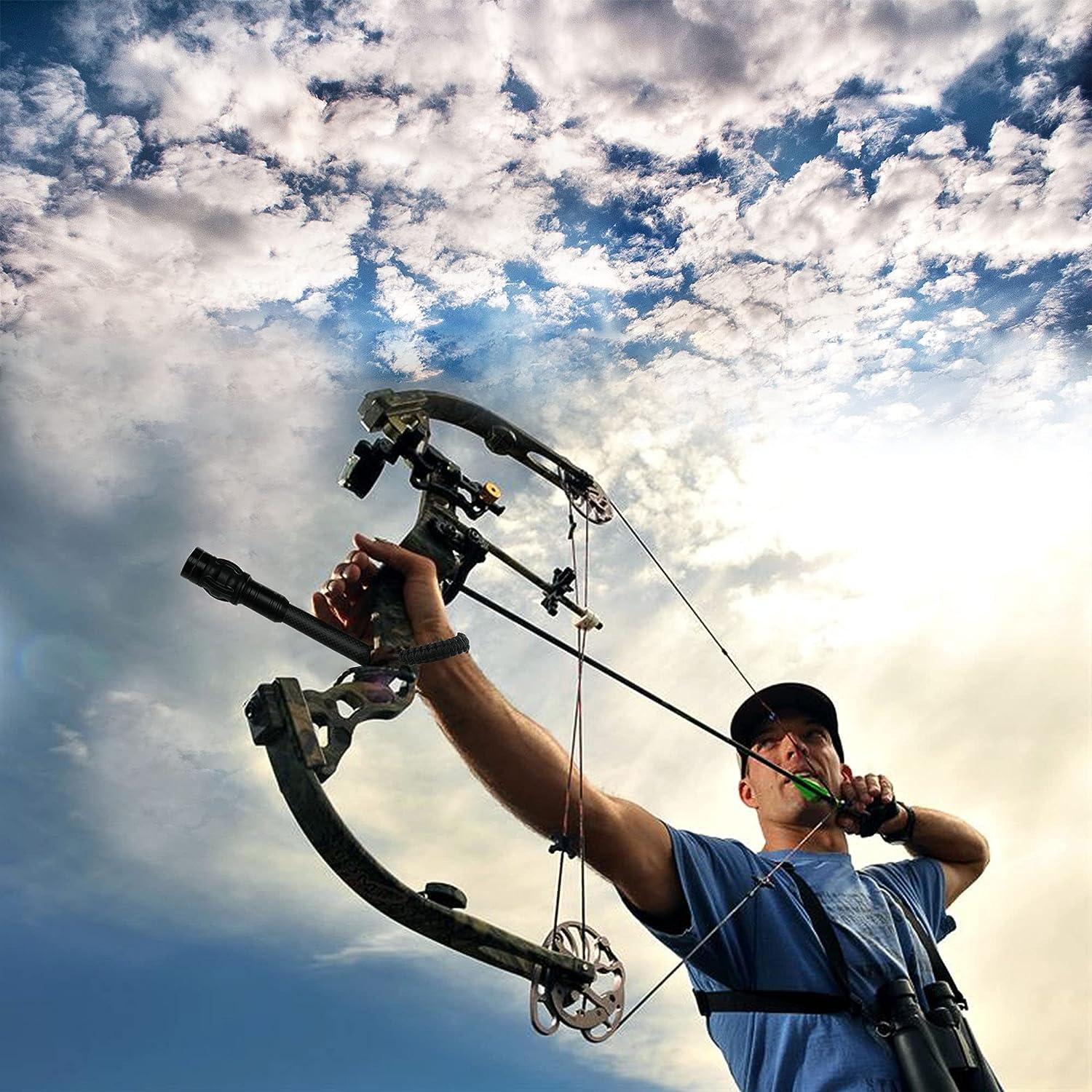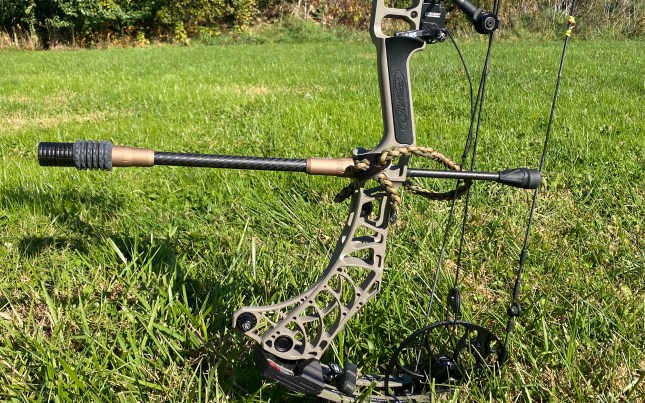Open Your Archery Prospective with the Right Compound Bow Stabilizer
Open Your Archery Prospective with the Right Compound Bow Stabilizer
Blog Article
Maximizing Your Archery Efficiency With the Right Substance Bow Stabilizer: a Comprehensive Overview
In the realm of precision, archery and uniformity are extremely important to accomplishing optimum performance. One essential yet often-overlooked component in improving precision is the substance bow stabilizer. This humble gadget plays a substantial duty in steadying your purpose, minimizing bow torque, and absorbing resonances. Nevertheless, the performance of a stabilizer depends upon various elements, consisting of style, weight, and placement. By recognizing the nuances of selecting and maximizing a compound bow stabilizer, archers can tweak their devices to raise their shooting experience to new degrees of efficiency and control.
Relevance of Bow Stabilizers in Archery

Additionally, bow stabilizers assist in stabilizing the weight circulation of the bow, which can improve the archer's stability while intending and shooting. By adding weight to the front of the bow, stabilizers can lower the quantity of torque experienced upon release, causing a smoother and much more controlled shot - compound bow stabilizer. This weight distribution also aids in holding the bow consistent for a longer period, enabling the archer to intend more accurately
Kinds Of Substance Bow Stabilizers
When considering the various types of substance bow stabilizers available, it is vital to recognize their unique features and features to establish the most ideal option for optimizing archery efficiency. The most usual types of substance bow stabilizers consist of sidebar stabilizers, front stabilizers, and back stabilizers. Back stabilizers, also called back stabilizers, are installed to the back of the bow and help in reversing the weight of other devices, resulting in enhanced security and consistent intending.
Variables to Consider When Choosing
In assessing compound bow stabilizers, recognizing the distinctive functions and features of each type is essential for making an educated choice on one of the most appropriate choice to enhance archery performance. When picking a stabilizer, one need to consider the weight of the stabilizer itself. While a much heavier stabilizer can supply even more stability by reducing the bow's movement, it might also create exhaustion during long shooting sessions. Equilibrium is an additional critical variable to contemplate. The stabilizer's size and layout substantially influence the bow's equilibrium, influencing the shooter's capacity to hold constant objective. Furthermore, the material of the stabilizer can influence its performance. Carbon fiber stabilizers are light-weight and absorb vibrations well, boosting accuracy. Furthermore, the number and adjustability of dampeners on the stabilizer can tweak its efficiency by decreasing sound and shock upon release. By meticulously evaluating these aspects, archers can select a compound bow stabilizer that aligns with their shooting design and optimizes their overall performance on the archery variety.
Installment and Adjustment Tips
For ideal efficiency and precision in archery, mastering the installation and adjustment of your bow stabilizer is necessary. Appropriate setup begins with connecting the stabilizer to the bow's riser, guaranteeing it is strongly secured. The majority of stabilizers feature mounting hardware for simple installation, but it's important to adhere to the supplier's standards for the details design you have. As soon as affixed, adjusting the stabilizer entails finding the ideal equilibrium in between weight circulation and length. Try out various combinations till you attain the desired feel and stability.
When adjusting the stabilizer, begin with little incremental changes rather than drastic changes. Pay interest to view it now just how the bow responds find more info to adjustments in stabilizer setups and make modifications as necessary. Frequently examine the stabilizer's rigidity and general problem to ensure it proceeds to function optimally.
Maintenance and Care Standards

It is also important to store your bow with the stabilizer in a secure and secure area when not in use. Prevent leaving it in extreme temperatures or exposed to direct sunshine for prolonged periods, as this might cause damage to the stabilizer. Occasionally check the stabilizer's alignment to ensure it is still effectively placed on your bow. Adhering to these maintenance and care standards will help you obtain one of the most out of your bow stabilizer and boost your general archery efficiency.
Conclusion
In final thought, choosing the ideal compound bow stabilizer is important for optimizing archery efficiency. Comprehending the importance, kinds, variables to take into consideration, setup and adjustment suggestions, along with maintenance and care standards can significantly impact one's precision and consistency in capturing. By selecting a stabilizer that matches private requirements and choices, archers can improve their overall efficiency and achieve far better results on the range or in competition.
Bow stabilizers play an important role in boosting an archer's precision and uniformity by reducing resonances and maintaining the bow during the release news of an arrowhead - compound bow stabilizer.Furthermore, bow stabilizers aid in stabilizing the weight distribution of the bow, which can improve the archer's stability while intending and firing. The most usual types of compound bow stabilizers include sidebar stabilizers, front stabilizers, and back stabilizers. Back stabilizers, also called back stabilizers, are mounted to the back of the bow and help in reversing the weight of other accessories, resulting in boosted security and consistent aiming. When selecting a stabilizer, one should consider the weight of the stabilizer itself
Report this page